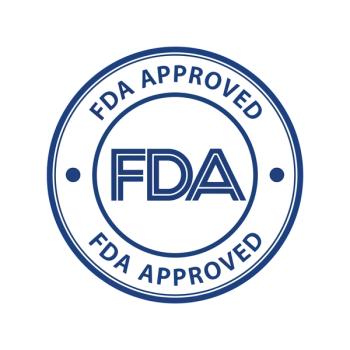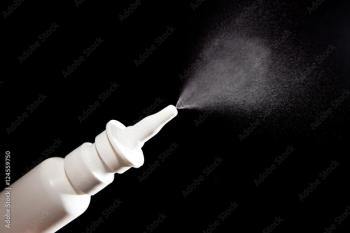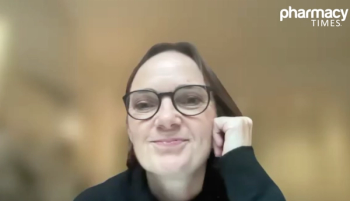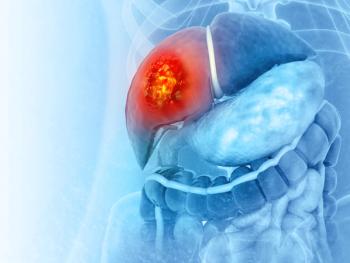
Quadruple Therapy With Isatuximab Shows Promise for Older Adults With Multiple Myeloma
Key Takeaways
- Isatuximab, targeting CD38, enhances MRD responses and extends progression-free survival, gaining multiple FDA approvals for combination therapies.
- The REST trial showed a 37% MRD-negative complete response in older adults with transplant-ineligible multiple myeloma using a quadruple regimen.
The quadruple treatment was active and safe as initial therapy for older patients with transplant-ineligible multiple myeloma.
Isatuximab (Sarclisa; Sanofi-Aventis U.S. LLC), bortezomib (Velcade; Millennium/Takeda and Janssen Pharmaceutical Companies), lenalidomide (Revlimid; Bristol Myers Squibb), and limited dexamethasone was an efficacious, safe treatment for older adults with transplant-ineligible multiple myeloma (MM). The quadruple regimen achieved a measurable residual disease (MRD)-negative complete response in 37% of patients ages 70 to 88.1
Isatuximab, a monoclonal antibody targeting CD38, has shown strong clinical benefits by enhancing minimal residual disease responses and extending progression-free survival. Its role in combination therapies has resulted in multiple FDA approvals. In 2021, the FDA approved isatuximab alongside carfilzomib (Kyprolis; Onyx Pharmaceuticals) and dexamethasone. In 2024, it gained another approval for use with bortezomib, lenalidomide, and dexamethasone—known as the VRd regimen—based on findings from the phase 3 IMROZ trial (NCT03319667). Emerging data from the REST trial (NCT04939844) suggests this quadruple regimen may be a therapeutic option for some older adult patients with MM who are ineligible for autologous hematopoietic stem cell transplantation.2-4
The academic, multicenter, single-arm, phase 2 trial included 51 patients (27 [53%] females and 24 [47%] males), with a median age of 77 years; IQR 73.5–80) who received isatuximab (10 mg per kg intravenously on days 1, 8, 15, and 22 of cycle 1, and days 1 and 15 of cycles 2 to 18), bortezomib (1.3 mg/m2 subcutaneously on days 1, 8, and 15 of cycles 1 to 8), and lenalidomide (25 mg orally on days 1 to 21, until progressive disease) in 28-day cycles. Dexamethasone was limited to the first 2 treatment cycles (20 mg orally on days 1, 8, 15 and 22). Out of the 51 patients, 39 completed 18 cycles.1
The primary end point was MRD-negative complete response, which was assessed by next-generation flow cytometry (sensitivity 1.0 × 10–5), during or after 18 cycles of study treatment.1
At the 27-month median follow up, 37% of patients achieved an MRD-negative complete response (95% CI 25.3–51.0) with a median treatment duration of 22 months (IQR 15.2–28.8; range 1.4–35.1). Out of the total population, 18 (35%) of patients experienced disease progression or death, and 8 (16%) patients had died.1
Of the 51 patients, 39 completed 18 cycles and 14 (27%) patients discontinued treatment before cycle 19, primarily due to progressive disease (16%) and adverse events (AEs; 8%). The most common AEs were grade 3 or 4 neutropenia (55%), infections (41% patients), and thrombocytopenia (22% patients).1
"In a population of less fit older adults with newly diagnosed [MM], the REST trial demonstrates that how anti-myeloma treatments are given is an important consideration,” Tanya M. Wildes, MD, of the University of Nebraska Medical Center in Omaha, wrote in a commentary accompanying the study, “and that some simple modifications, including weekly bortezomib and omitting dexamethasone after cycle 2, could allow more individuals to be considered quad-eligible.”5
REFERENCES
1. Askeland FB, Haukås E, Slørdahl T, et al. Isatuximab, bortezomib, lenalidomide, and limited dexamethasone in patients with transplant-ineligible multiple myeloma (REST): a multicentre, single-arm, phase 2 trial. Lancet Haematol. February 2025. doi: 10.1016/S2352-3026(24)00347-8.
2, A 30-minute infusion of isatuximab is safe, feasible in patients with newly diagnosed multiple myeloma. Pharmacy Times. January 29, 2025. Accessed February 5, 2025. https://www.pharmacytimes.com/view/a-30-minute-infusion-of-isatuximab-is-safe-feasible-in-patients-with-newly-diagnosed-multiple-myeloma
3. Clinical benefit of sar650984, bortezomib, lenalidomide and dexamethasone combination in ndmm patients not eligible for transplant (imroz). ClinicalTrials.gov Identifier: NCT03319667. Updated April 8, 2024. Accessed January 28, 2025. https://clinicaltrials.gov/study/NCT03319667
4. REST - replacing steroids in the transplant ineligble (REST). Updated March 1, 2023. Accessed February 5, 2025. https://clinicaltrials.gov/study/NCT04939844
5. Wildes T. Optimising quadruplet regimens to broaden eligibility in multiple myeloma. Lancet Haematol. February 2025. doi:10.1016/S2352-3026(24)00356-9
Newsletter
Stay informed on drug updates, treatment guidelines, and pharmacy practice trends—subscribe to Pharmacy Times for weekly clinical insights.












































































































































































































